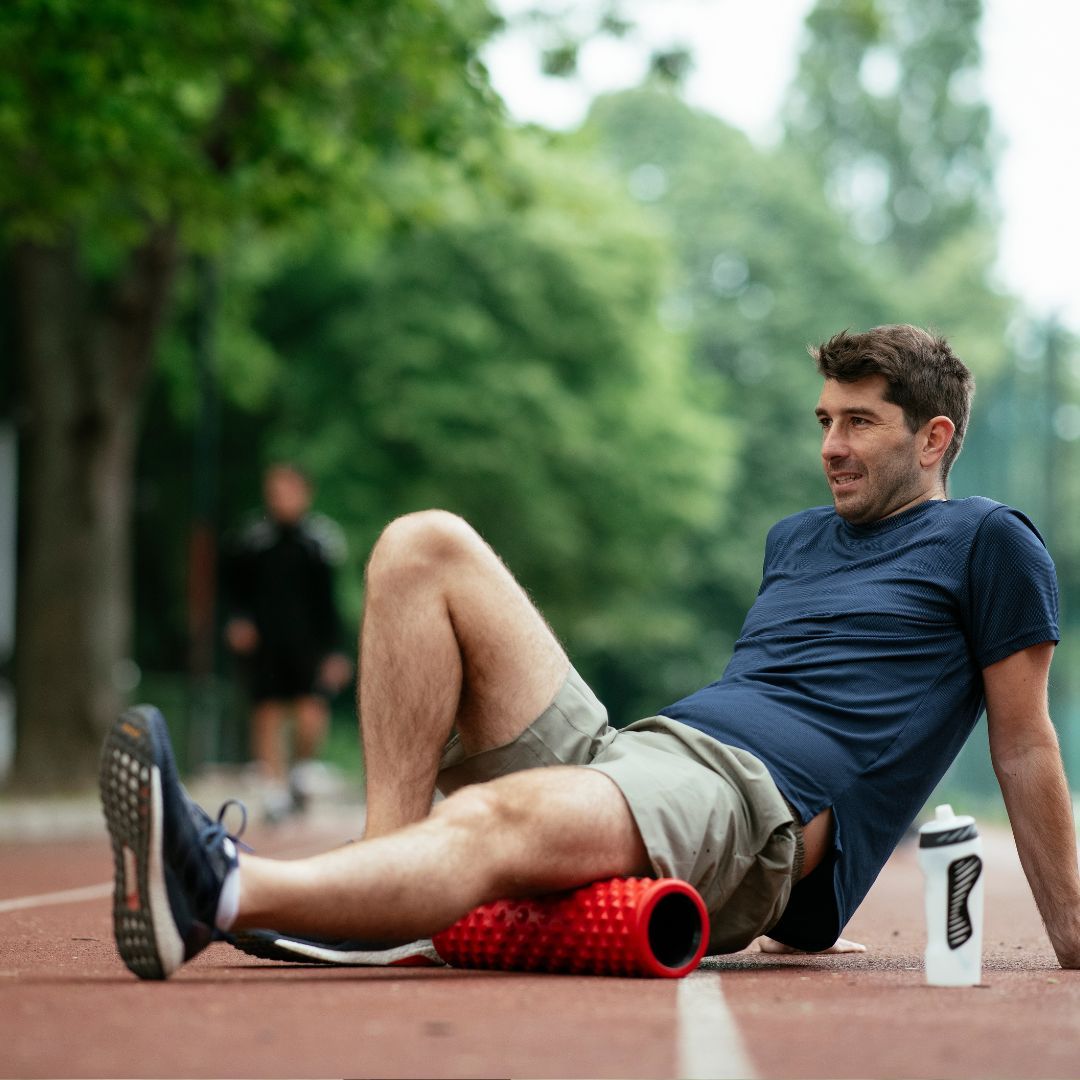How To Manage Injuries | Part 2 - Injury management & prevention
Part 2 - Injury management and prevention

Alright, in part 1 of this series, we went over the two main types of injuries - Acute & Chronic injuries.
In case you did not read that article, let me briefly explain this further.
Acute injuries have an immediate onset and happen when the working tissues’ capabilities have been exceeded, or a sudden clash/fall has occurred.
These are best managed by letting the area rest and applying ice in the first 48-72 hours, as well as training around the injury in a way that won’t aggravate it.
On the other hand, chronic injuries happen gradually over time and are mainly caused by poor exercise form, overexertion, and suboptimal recovery protocols.
Now, keep in mind, though these are two different types of injuries, poor management of an acute injury (even a small one), can snowball into a chronic injury over time.
If there are even small pains that persist, it is recommended that you do not neglect them and advise with a professional.
Without further ado, let’s have a look at the best injury-prevention practices.
How To Prevent Chronic Injuries
Alright, as you already know, chronic injuries are primarily the end result of poor training decisions, not prioritising recovery, poor mechanics, and old injuries.
And though that sounds bad, it actually means that most chronic injuries are preventable!
Here are my best tips to help you prevent injuries and enjoy a functional body for decades to come:
#1 Prime The Body For Exercise (Warm-up)
It is oftentimes that people neglect the warm-up in the beginning of their training sessions and go too hard too fast.
Well, the fact of the matter is that preparing the body before you jump into hard sets, or any run for that matter, is the best way to prevent any type of injuries.
Think about it - If you cold-start your car and put the pedal to the floor right away, what would happen? Something will break eventually.
Now here’s what a good warm up will do:
● Increase your heart rate
● Raise your temperature slightly
● Activate your muscle fibers (especially important before strength training)
The first two can be done with low-intensity activities, such as easy running, followed by dynamic stretching, and some simple drills.
For instance, run for 5-10 minutes, stop and do some leg swings, walking lunges, arabesques and knee hugs. Follow this just a few (maybe 10 of each) jumps, hops and high knee skips.
When you are about to do an interval/tempo/hard session, it is a good idea to do 3-5 x 100m strides up to your coming effort level in the first warm-up kilometres. This gets your body ready for the work to come and mentally prepares you too!
All of this will prepare the body for the work to come and will massively reduce the risk of injury.
#2 Use Proper Exercise Form When Doing Strength Work
Whether you are a beginner trainee or someone who has a couple of years of experience, your main priority should always be your exercise form.
If you sacrifice good exercise form for a couple of extra kilograms on the bar, you are setting yourself up for an injury, thus robbing yourself of progress.
Remember that each and every joint has a certain biomechanical position, at which it can safely exert the most force possible for its working muscle groups.
Anything less than that and you are speeding up the wear and tear of your joints and ligaments.
#3 Eat well & Drink Water
When a person experiences an injury, more often than not the instinctive reaction is to look for creams and gels you can apply on the injured area, to speed up healing.
For that exact reason, food and water intake are often underestimated when it comes to healing, recovery, and injury prevention.
But if you think logically, you’d know that they are REALLY important and can be a powerful ally for maintaining a healthy skeleton & musculature.
This is simply because food contains essential nutrients, which the body can’t produce on its own, but needs for optimal health and recovery.
Furthermore, specifically in the case of injuries, certain foods can actually increase inflammation, while others can mitigate it.
Here are my 5 best nutrition tips to prevent and treat injuries:
- Consume protein-rich foods that have a complete amino acid profile (All animal products for omnivores, a mix of grains for vegans/vegetarians)
- Drink enough water daily (2-4 litres depending on atmospheric temperature & activity levels. Avoid excessive thirst)
- Avoid deep-fried foods (Fried foods can increase inflammation)
- Include plenty of vegetables & fruits (Vitamins and minerals are just as important as protein, fats and carbs!)
- Include Omega-3 fatty acids (These can help mitigate inflammation and can be derived from fish and other sea food)
#4 Get Frequent Massages
One thing you should really acknowledge is the fact that your muscular system is REALLY complex and has many functional components.
As you use it, your muscles & their fascia get fatigued, and even after solid recovery, they may feel stiff at one point.
The fascia is a thin layer of connective tissue that holds every organ, bone, muscle, and nerve fibre in place. As these active components go through stress, their fascia tightens up.
This is exactly where deep tissue massages can come in handy, to release the fascia and rejuvenate the working tissues and their nerves.
Besides releasing the tension from the tissues, deep massages will also improve blood flow to the area.
This in turn will allow the blood to deliver more oxygen & nutrients to the area, thus improving recovery and lowering the chance of injury.
If you run regularly, it is recommended that you get a massage at least twice a month. I highly recommend Stephen Smith (Wantirna, Melbourne). Message me for contact details!!
#5 Stretch!
If you don’t like the idea of getting frequent massages, there are alternative ways to release the tension in the muscles and fascia on your own. And to be honest, I recommend rolling and stretching AS WELL as massage!
Stretching is in fact the best way to do so and it is best combined with spiky/round ball or foam-roller exercises that will allow you to release the tension in-depth.
It is recommended that you do your stretching exercises AFTER the training bout rather than at the start, where the goal would be to activate your muscle.
Think of it this way - As you go into your run, your goal is to recruit and activate more and more muscle fibres, by contracting the muscles (opposite of stretching).
Throughout the workout the muscles get fatigued and at the end of the run it is time to relax that tension, by implementing stretching exercises
#6 Use Joint Recovery Supplements
Besides managing training intensity, exercise form, and taking care of muscle maintenance, joint recovery supplements are also a viable injury-prevention option.
Here are our best picks for such supplements:
● Chondroitin - Helps recover the joints’ cartilage by stimulating its repair mechanisms
● Glucosamine - Helps with the recovery and formation of ligaments, tendons, joint fluid and cartilage (usually paired with chondroitin)
● Collagen - This is the most important protein of all connective tissues and as a supplement, it can help recover cartilages, tendons, and ligaments
Ultimately, these supplements won’t compensate for the lack of proper exercise form, nutrition & a methodical approach to training, so consider them a bonus!
Important takeaways
● Getting injured doesn’t necessarily mean you should stop training - Train around the injury by doing movements that won’t aggravate it
● The best strategy with an acute injury is to let it rest and working on gaining back the full range of motion once swelling and pain have subsided
● Chronic injuries are best prevented by practicing good exercise form, making good training decisions like warming up, avoiding overexertion, as well as managing recovery windows
● Take care of your recovery by getting frequent massages, sufficient nutrition, as well as joint-support supplements











